We’ve talked about the advantages of private and business travel over commercial airline travel in the past. Those benefits are even more pronounced when considering winter flying. Private jet travel provides an option flexible enough to schedule around bad weather. You don’t have to worry about getting stranded at airports because of cancelled flights; however, winter jet travel does require more planning and precautionary measures to avoid the challenges this season presents.
Avoid the mess
Unfortunately for airlines and travelers, the busy holiday travel season also coincides with winter and the added challenges it brings. Snow storms can cause takeoff and landing problems, and ground traffic and air traffic congestion can cause further delays and cancellations. Commercial travelers are literally at the mercy of the airlines, and sometimes they never reach their destinations.
 Private jets provide the flexibility to adjust flight times until about two hours before a flight — and sometimes even midflight. Private jet travelers can also change their routes to make use of smaller airports that experience less of a weather impact. Switching to the convenience of smaller airports may also allow private jet travelers to reduce their exposure to unsafe road conditions.
Private jets provide the flexibility to adjust flight times until about two hours before a flight — and sometimes even midflight. Private jet travelers can also change their routes to make use of smaller airports that experience less of a weather impact. Switching to the convenience of smaller airports may also allow private jet travelers to reduce their exposure to unsafe road conditions.
Private travel also lets them skip long security lines, which — given security threats and a busy travel season — are exceptionally long. Even the faster precheck security lines are long. In fact, precheck lines are sometimes longer than non-priority lines due to airline policies of assigning random passengers to the pre-check line.
Performance perks
Convenience and flexibility are not the only perks private jets provide during winter. Most jets perform better when the weather is cold. Cold air is more dense than warm air, and that positively affects performance metrics such as takeoff distance and climb rate. Also, colder air temperature allows jet engines to use a greater mass of air and fuel mixed, which results in greater power. Cold air usually produces less turbulence as well.
Winter precautions
With all the benefits jets provide winter travelers, private jet owners and operators also need to take precautions. Plan your flight carefully, considering aspects like how easily accessible airports are as well as weather patterns for the area. Make sure you file a flight plan and update it when necessary, and be willing to adjust flights when weather becomes an issue. But those aren’t the only precautions you’ll want to check off your list before taking off.
 Check all hoses, clamps, and hydraulic fittings.
Check all hoses, clamps, and hydraulic fittings.- Check the engine oil to make sure it’s the proper weight for cold weather.
- Inspect the cabin heater to ensure no carbon monoxide is leaking.
- Check for fuel contaminants from condensation, which can result from your pilot parking your warm aircraft in the cold.
- Remove frost, snow, and ice before taking off. Store your jet in a warm hangar when possible and, when the engine is cold, follow the manufacturer’s preheating instructions.
Don’t let winter travel get you down. Avoid the headaches of winter airline travel and take advantage of the benefits you can experience through private jet travel.
One of the biggest drivers of private and business aviation is time savings. After all, time is money. For those considering private flight, options are fixed-wing or rotorcraft. Each has its merits for certain situations, but more and more business leaders are opting to take advantage of both. What are the benefits of helicopter ownership?
Jet or helicopter — or why not both?
Business globalization and the speed at which business takes place has made jet travel crucial for leaders of medium and large businesses. Aviation advancements are allowing for greater travel speeds and nonstop flights between important city pairs such as San Francisco and Sydney or New York and Tokyo. To further reap the business benefits of air travel, most jets have high-speed internet connectivity, office and meeting facilities, and rest and relaxation provisions.
Helicopters are another valuable business tool, but these are not your standard traffic cam or sight-seeing helicopters. Business helicopters are performing better as well as becoming faster, more comfortable, safer, and less noisy. They also are more fuel efficient, require less maintenance, and increasingly offer customizable luxury interiors.
Helicopters’ smaller sizes and greater maneuverability make them ideal for short jaunts and trips to hard-to-reach destinations. Helicopters can take passengers directly to their final destinations as opposed to the nearest airport. And helicopters are convenient vehicles for getting from meeting to meeting, visiting company offices and facilities, treating clients and colleagues, and visiting friends and family. Many helicopter owners are also becoming pilots, making their rides of choice even more convenient and less expensive to fly.
Some company leaders are not choosing between buying corporate jets or helicopters — rather, they are opting for both. They use jets for long-distance flights and destinations with suitable airport facilities and helicopters for shorter flights or for flying above the gridlock. Those who own both one or more jets and helicopters often choose to park their helicopters strategically and use them to carry jet passengers from airports to their final destinations, thus, avoiding ground traffic delays. Some also park their jets at smaller, less expensive airports and use helicopters to travel back and forth.
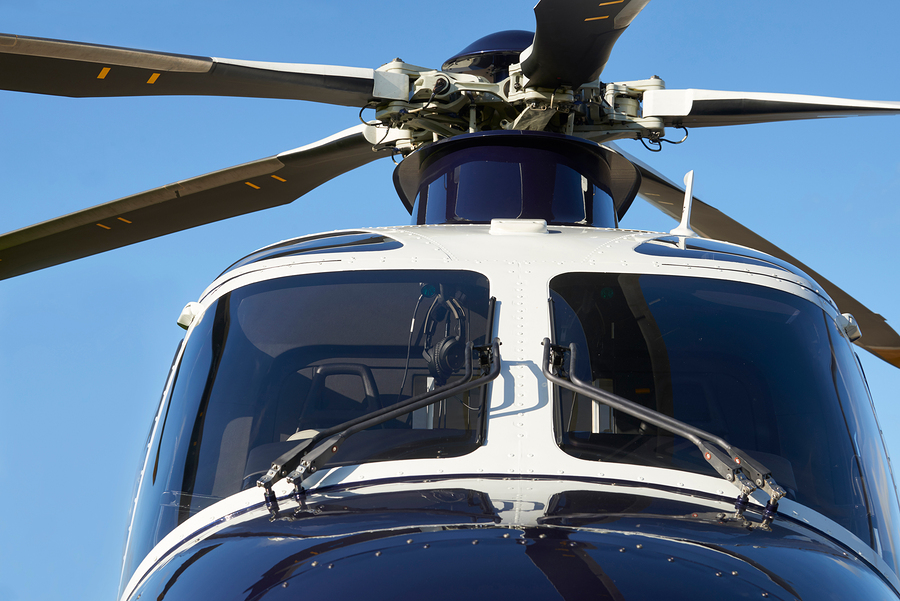
What will be next on the market?
For those whose interests in rotorcraft have been fueled, here are a few examples of what’s on the market or will be shortly.
The AgustaWestland AW169 from Leonardo Helicopters is the first “cabin-class executive twin to hit the market since the Sikorsky S-76 arrived in 1979.” The luxury interior seats six to 10 passengers and features advanced Rockwell Collins glass-panel touchscreen avionics, electric-power generation and distribution systems, noise and vibration reduction technologies, and a 531-nautical-mile range, along with a reasonable price tag of $8.5 million. For an additional million, buyers can add a customized executive interior.
 The Airbus H160 Helicopter is on its third prototype and is expected to enter service in 2019. It will provide private and business owners with the ultimate in performance, safety, and comfort. The medium-sized helicopter uses a rotor blade configuration that provides a smoother, quieter flight. TheH160 offers utility seating for 12 passengers and can be configured for a four- or eight-passenger executive layout.
The Airbus H160 Helicopter is on its third prototype and is expected to enter service in 2019. It will provide private and business owners with the ultimate in performance, safety, and comfort. The medium-sized helicopter uses a rotor blade configuration that provides a smoother, quieter flight. TheH160 offers utility seating for 12 passengers and can be configured for a four- or eight-passenger executive layout.
And those are just two of the latest helicopter models soon to be available for private or business purchase. With declining pre-owned options to consider, will your next private flight option be a helicopter?
[et_pb_section admin_label=”Section” fullwidth=”on” specialty=”off” background_image=”https://www.l-lint.com/wp-content/uploads/2016/03/slider_1_1.jpg” transparent_background=”off” allow_player_pause=”off” inner_shadow=”off” parallax=”off” parallax_method=”off” padding_mobile=”off” make_fullwidth=”off” use_custom_width=”off” width_unit=”on” make_equal=”off” use_custom_gutter=”off”][et_pb_fullwidth_header admin_label=”Fullwidth Header” title=”CORPORATE JET INSIDER” background_layout=”light” text_orientation=”center” header_fullscreen=”off” header_scroll_down=”off” background_url=”https://www.l-lint.com/wp-content/uploads/2016/03/slider_1_1.jpg” background_overlay_color=”rgba(255,255,255,0.82)” parallax=”off” parallax_method=”off” content_orientation=”center” image_orientation=”center” custom_button_one=”off” button_one_letter_spacing=”0″ button_one_use_icon=”default” button_one_icon_placement=”right” button_one_on_hover=”on” button_one_letter_spacing_hover=”0″ custom_button_two=”off” button_two_letter_spacing=”0″ button_two_use_icon=”default” button_two_icon_placement=”right” button_two_on_hover=”on” button_two_letter_spacing_hover=”0″]
[/et_pb_fullwidth_header][/et_pb_section][et_pb_section admin_label=”section”][et_pb_row admin_label=”row”][et_pb_column type=”3_4″][et_pb_post_title admin_label=”Post Title” title=”on” meta=”on” author=”off” date=”on” categories=”on” comments=”off” featured_image=”off” featured_placement=”below” parallax_effect=”on” parallax_method=”on” text_orientation=”left” text_color=”dark” text_background=”off” text_bg_color=”rgba(255,255,255,0.9)” module_bg_color=”rgba(255,255,255,0)” title_all_caps=”off” use_border_color=”off” border_color=”#ffffff” border_style=”solid”]
[/et_pb_post_title][et_pb_text admin_label=”Text” background_layout=”light” text_orientation=”left” use_border_color=”off” border_color=”#ffffff” border_style=”solid”]
 Super Bowl 50 was held on Feb. 7, 2016, at Levi’s Stadium in Santa Clara, California, located between San Jose and San Francisco. As the largest American sports attraction of the year, experts estimated up to 1,200 private jets descended on the area as fans lined up for the annual showdown. With wine country and top golf courses nearby, many people expected private jet travelers to extend their trips into Northern California.
Super Bowl 50 was held on Feb. 7, 2016, at Levi’s Stadium in Santa Clara, California, located between San Jose and San Francisco. As the largest American sports attraction of the year, experts estimated up to 1,200 private jets descended on the area as fans lined up for the annual showdown. With wine country and top golf courses nearby, many people expected private jet travelers to extend their trips into Northern California.
As fans across the nation prepared their ultimate game plans, JetSuite got in on the action by offering empty-leg flights for Super Bowl travelers with next-day travel plans on Friday, Feb. 5, and Saturday, Feb. 6. These super deals ($50 for a flight!) were also available for return legs on Saturday and Sunday. JetSuite offered this special for the entire aircraft. With between four and six seats open on their Phenom or Citation CJ3 aircraft, fliers could register with the company online and receive a text message or email when a SuiteDeal became available from the desired airport location.
With as many as five airport options to fly into, logistics were a bit more challenging, but plenty of private jet operators came up with unique solutions to cater to the Super Bowl crowd — including last-minute opportunities and private parties.
- XOJet, based in the Bay Area, sells jet cards and offers on-demand charters. It served Super Bowl-style wings and seven-layer dip to passengers. On the ground, it had dedicated staff and concierge services to ensure clients got to parties by ESPN, Rolling Stone, and DirectTV and could secure game tickets if needed.
- VistaJet offered its customers who booked and flew to the game VIP credentials to the Bleacher Ball, where the Zac Brown Band performed.
- Berkshire Hathaway-owned NetJets had Maroon 5 playing at its private Saturday afternoon concert in Nob Hill, an event only open to NetJet customers and their guests.
The catering companies were also prepared. AirCulinaire, a network of gourmet kitchens catering in-flight meals to private jet travelers, recently opened a large facility in San Francisco. On Super Bowl weekend, it offered customers departing the Bay Area football-themed local specialties. See their Big Game 2016 In-flight Catering Menu to see the fresh delectables they offered for the ultimate, customizable tailgate party.
Contact L & L International if you need assistance in purchasing or selling a private jet. You can reach our sales specialists today at
sales@L-Lint.com, call us any time at +1.305.754.3313, or
visit us online.
[/et_pb_text][/et_pb_column][et_pb_column type=”1_4″][et_pb_sidebar admin_label=”Sidebar” orientation=”right” area=”sidebar-1″ background_layout=”light” remove_border=”off”]
[/et_pb_sidebar][/et_pb_column][/et_pb_row][/et_pb_section]
[et_pb_section admin_label=”Section” fullwidth=”on” specialty=”off” background_image=”https://www.l-lint.com/wp-content/uploads/2016/03/slider_1_1.jpg” transparent_background=”off” allow_player_pause=”off” inner_shadow=”off” parallax=”off” parallax_method=”off” padding_mobile=”off” make_fullwidth=”off” use_custom_width=”off” width_unit=”on” make_equal=”off” use_custom_gutter=”off”][et_pb_fullwidth_header admin_label=”Fullwidth Header” title=”CORPORATE JET INSIDER” background_layout=”light” text_orientation=”center” header_fullscreen=”off” header_scroll_down=”off” background_url=”https://www.l-lint.com/wp-content/uploads/2016/03/slider_1_1.jpg” background_overlay_color=”rgba(255,255,255,0.82)” parallax=”off” parallax_method=”off” content_orientation=”center” image_orientation=”center” custom_button_one=”off” button_one_letter_spacing=”0″ button_one_use_icon=”default” button_one_icon_placement=”right” button_one_on_hover=”on” button_one_letter_spacing_hover=”0″ custom_button_two=”off” button_two_letter_spacing=”0″ button_two_use_icon=”default” button_two_icon_placement=”right” button_two_on_hover=”on” button_two_letter_spacing_hover=”0″] [/et_pb_fullwidth_header][/et_pb_section][et_pb_section admin_label=”section”][et_pb_row admin_label=”row”][et_pb_column type=”3_4″][et_pb_post_title admin_label=”Post Title” title=”on” meta=”on” author=”off” date=”on” categories=”on” comments=”off” featured_image=”off” featured_placement=”below” parallax_effect=”on” parallax_method=”on” text_orientation=”left” text_color=”dark” text_background=”off” text_bg_color=”rgba(255,255,255,0.9)” module_bg_color=”rgba(255,255,255,0)” title_all_caps=”off” use_border_color=”off” border_color=”#ffffff” border_style=”solid”] [/et_pb_post_title][et_pb_text admin_label=”Text” background_layout=”light” text_orientation=”left” use_border_color=”off” border_color=”#ffffff” border_style=”solid”]
 Several high-end travel companies have recently come up with a novel journey idea: custom excursions that take travelers by private jet to some of the world’s most extraordinary destinations.
Several high-end travel companies have recently come up with a novel journey idea: custom excursions that take travelers by private jet to some of the world’s most extraordinary destinations.
- Snorkeling on a private island in Fiji
- Hiking and visiting temples in Bali
- Photographing on a safari in the Serengeti
- Shopping in Marrakech, Morocco
- Touring Prague
Of course, these travel companies are capitalizing on the sense of adventure and freedom that private jet owners are all too familiar with already. The ability to explore the far reaches of the globe — secluded islands, thriving urban centers, and everything in between — in the perfect luxury and comfort of a private jet can’t be beat. Traveling on a private jet means you can get far closer to inspiring and timeless destinations more quickly than commercial travel and with far fewer transfers.
In the new year, what discoveries will you make? What will your custom private jet excursion look like?
- Will you take a snorkel safari in the deep turquoise waters of the tiny Micronesian island Nauru, with its untouched white sand beaches and only one registered taxi driver?
- Will you pop into Ittoqqortoormiit, Greenland, a destination where the houses are extraordinarily colorful and the location is only accessible by helicopter for standard travelers?
- Will you explore Masoala National Park in Madagascar, home to some of the most exotic geckos in the world?
The beauty of owning a private jet is that you can take the unprecedented opportunity to create your own custom private jet excursion — and avoid the $132,000 price tag to go on a pre-packaged itinerary that may not fit your desires or needs. A price like that for a single trip makes a private jet purchase look even better on the balance sheets.
Contact L & L International if you need assistance in purchasing or selling a private jet. You can reach our sales specialists today at sales@L-Lint.com, call us any time at +1.305.754.3313, or visit us online.
[/et_pb_text][/et_pb_column][et_pb_column type=”1_4″][et_pb_sidebar admin_label=”Sidebar” orientation=”right” area=”sidebar-1″ background_layout=”light” remove_border=”off”] [/et_pb_sidebar][/et_pb_column][/et_pb_row][/et_pb_section]
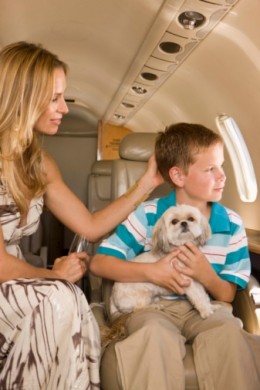 Many of us believe that our pets are part of the family, and so it is natural that we want to take them with us when we travel for business or on vacations. When your four-legged family member wants to tag along, it’s important to ensure that the trip is an enjoyable and safe experience for everyone. To that end, the following tips can help you travel comfortably with your furry friends:
Many of us believe that our pets are part of the family, and so it is natural that we want to take them with us when we travel for business or on vacations. When your four-legged family member wants to tag along, it’s important to ensure that the trip is an enjoyable and safe experience for everyone. To that end, the following tips can help you travel comfortably with your furry friends:
- Start by making sure your pet’s vaccinations are updated and they are healthy. A visit to the vet before traveling can make a big difference.
- Do some research before the trip to make sure that where you are flying will allow your pet to enter. If you’re flying internationally, check the local laws to understand the process and paperwork involved with bringing your pet into the country.
- Ensure your pets have collars with tags containing the complete information needed to get in touch with you in case of separation, wherever you are in the world.
- Go on a short trip with your pet or pets ahead of time to see how they react to the situation. This way, you’ll know if they get sick while traveling or need to be confined while the vehicle or aircraft is in motion.
- Choose a reliable harness to secure them in their seat in case of turbulence.
- Just as you need to drink plenty of water when you fly, your pets do as well. Do everything you can to ensure that your pets stay well hydrated on the trip. Also bring enough food to last them through the whole trip — you never know how available your preferred brand of pet food will be in another location!
One hint that has saved many a traveler’s back: choose carriers with wheels. Even a 10-pound dog or cat can get very heavy when you have to carry them for a long distance!
While flying can be stressful for you and your pets, a private jet offers far more comfort to you both than any commercial airline can. A private jet also allows your pets to be near you and close to the people they love, trust, and understand.
Contact L & L International if you need assistance in purchasing or selling a private jet. You can reach our sales specialists today at sales@L-Lint.com, call us any time at +1.305.754.3313, or visit us online.
 Traveling commercial can be stressful enough — but add pregnancy and/or children into the mix and it can reach new levels of complication. Most scheduled flights won’t allow a pregnant woman to travel after 36 weeks and they can even require a ‘safe to travel’ medical waiver after 28 weeks. Who needs that level of attention?
Traveling commercial can be stressful enough — but add pregnancy and/or children into the mix and it can reach new levels of complication. Most scheduled flights won’t allow a pregnant woman to travel after 36 weeks and they can even require a ‘safe to travel’ medical waiver after 28 weeks. Who needs that level of attention?
Private jet operators generally follow slightly more flexible guidelines and can offer flights at later stages with a doctor’s permission. That said, the benefits of flying by private jet while pregnant extend far beyond the privacy intrusion and include the ability to:
- avoid standing in long security lines
- enjoy greater cabin and seating space
- fully recline the seats and even beds
If flying pregnant isn’t hard enough, flying with children can be equally difficult. Baby food, baby milk, and children’s medication can be taken on board a private aircraft without the TSA scrutiny, and special food can usually be provided when required. Passport details are no longer a last-minute surprise because they are worked out in advance before the flight.
Other features that make flying with children on a private jet a no-brainer include:
- ability to adjust the temperature
- sitting close to your child
- avoiding close proximity of too many people during flu season
- on-board entertainment systems that meet your child’s needs (not the needs of everyone on board)
- option of crafting your own menu
Finally, and perhaps most importantly, you can avoid the disapproval of others that inevitably occurs when you mix even the most well behaved children with adults who are less than supportive of parents. If your toddler does throw a fit, you are free to handle the situation without fear of scrutiny from other passengers.
Traveling with your family should be a fun, stress-free experience. Flying private can make it easier to get where you need to go without the worry that comes with traveling with children.
Contact L & L International if you need assistance in purchasing or selling a private jet.
You can reach our sales specialists today at
sales@L-Lint.com, call us any time at +1.305.754.3313, or
visit us online.
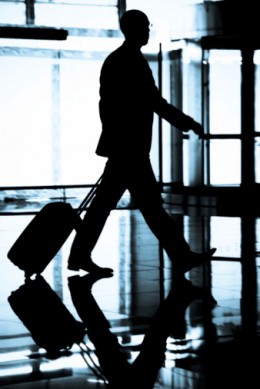 Traveling the world, visiting an exciting new location every day, seeing the world from 40,000 feet about the ground … sounds like a dream, right? But pilots and flight crews face risks that other occupations often do not.
Traveling the world, visiting an exciting new location every day, seeing the world from 40,000 feet about the ground … sounds like a dream, right? But pilots and flight crews face risks that other occupations often do not.
Numerous studies have linked health conditions to frequent flying. From increased exposure to UV rays and cosmic radiation to deteriorating eyesight, those who fly often must take extra measures to protect themselves from health risks. If you are a pilot, on a flight crew, or fly very frequently, you could be at risk for any of these conditions.
Skin Cancer — Airplane windshields are made of polycarbonate plastic or multi-layer composite glass and do not completely block UV-A or UB-B ultraviolet radiation. Thus, airline pilots have a higher risk of skin cancer — as high as twice the risk for melanoma in the general population. Consider this fact: Flying for just an hour at 30,000 feet is equivalent to 20 minutes on a tanning bed. In addition, UV exposure levels could be higher when pilots are flying over thick clouds and snow due to the reflection. Cosmic radiation exposure is also a significant concern because women who pilot and crew aircraft are 30% more likely to develop breast cancer.
What can pilots and flight attendants do? Wear sunscreen every time you fly and reapply it often. Also be sure to get regular wellness exams.
Deteriorating Vision — Good eyesight is essential for pilots operating aircraft. While natural aging brings gradual changes in the structure of a person’s eyes and to their quality of vision, those changes appear to happen more rapidly for frequent flyers. Researchers at Johns Hopkins University’s Bloomberg School of Public Health retrospectively examined the visual performance of over 3,000 regional and air-taxi pilots as recorded in their aeromedical certification records filed with the FAA. According to the study, 419 of the 3,019 pilots had serious vision problems, including corneal problems, glaucoma, and cataracts.
What can pilots do? Keep up with regular eye exams because early detection is the key to controlling the decline in your vision. Wear protective eye wear whenever outside and consume plenty of carotene-rich foods like carrots.
Deep Vein Thrombosis (DVT) — In recent years, DVT has received increased coverage partly due to some high-profile deaths of airline passengers. It turns out that the risk is also quite high for pilots, whereas flight attendants, who move about the cabin quite a lot, are not at as high a risk. Dubbed ‘economy class syndrome’ for its potential effects on air travelers forced into cramped spaces with limited mobility, DVT is just as deadly for pilots who cannot move about a cramped cockpit to exercise their lower limbs and reduce the risk of blood clots in the legs.
What can pilots do? Get regular workouts and keep your weight in check. Stand when you can and stretch and wriggle your legs and feet when you can’t. Movement is the key to preventing DVT.
Being proactive about health both on and off an aircraft can counteract the negative health risks caused by frequent flying.
Contact L & L International if you need assistance in purchasing or selling a private jet.
You can reach our sales specialists today at sales@L-Lint.com, call us any time at +1.305.754.3313, or visit us online.
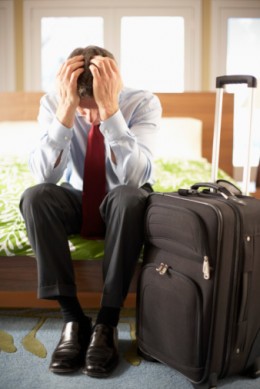 Sending employees abroad for a quick trip or assignment is an essential part of doing everyday business for many organizations, so much so that frequent business travel has become essential to thriving in a global economy. If you, or your employees, travel a lot on behalf of your business — both in the U.S. and abroad — it’s your legal responsibility to ensure their health and safety.
Sending employees abroad for a quick trip or assignment is an essential part of doing everyday business for many organizations, so much so that frequent business travel has become essential to thriving in a global economy. If you, or your employees, travel a lot on behalf of your business — both in the U.S. and abroad — it’s your legal responsibility to ensure their health and safety.
Many countries around the world have comprehensive legislation protecting business travelers, and Duty of Care legislation has become an increasingly hot topic in the corporate travel world. It holds companies liable for protecting the health and safety of their employees who need to travel for business purposes. Failure to comply comes with a range of legal and financial consequences. In Germany, for example, the liability for health-related costs extends beyond the traveling employee to family members who may be visiting the business traveler.
What’s the concern?
In some situations, the very act of traveling can be risky for an individual’s health. The CDC recently exposed how traveling can be an expensive health risk, and brought some scary statistics to light:
- For every 100,000 travelers visiting a developing country, 50,000 will develop a health problem abroad.
- A course of hospitalized treatment for malaria can be as high as $25,000 or more.
- The cost of an emergency medical evacuation can be as high as $250,000.
How frequent business travel affects your health
Research conducted by Columbia University’s Mailman School of Public Health found that people who travel often for business are less likely to be healthy than those who travel infrequently. Using the health records of 13,000 people from corporate wellness programs, researchers discovered that those on the road at least two weeks every month had:
- Higher body mass index — a key indicator of weight issues
- Higher blood pressure
- Less ‘good’ cholesterol
In addition, the frequent travelers consistently rated their own health as ‘poor’ or ‘fair’ three times more often than light travelers did, showing their perception of health was also lower than average.
What you can do
When you and/or your employees travel often, having the right resources to stay safe and healthy is key. Here’s what you can do:
- Get educated on preventative health care while on the road. This means not only knowing how to find quality health care facilities, but also how to implement healthy habits of exercise, sleep, and clean food and water on the road.
- Get the right vaccinations well ahead of the trip, and ensure that you and your employees have access to the medications needed to prevent health emergencies while traveling.
- Put well-coordinated emergency procedures in place to ensure that every employee understands what to do in a health emergency. This should include having business travel insurance in place to protect your employees should a travel emergency arise.
As any business owner knows, the safety of you and your employees should always come first. Taking the necessary steps and providing the right education to traveling employees is essential. Being proactive about health and knowing what to do in an emergency can keep your company clear of legal and financial liability as well as ensuring that your employees remain on the job and healthy.
Contact L & L International if you need assistance in purchasing or selling a private jet.
You can reach our sales specialists today at sales@L-Lint.com, call us any time at +1.305.754.3313, or visit us online.
 Another year, and another Valentine’s Day is almost here. As a jet owner, you have plenty of options for making the holiday memorable for you and your significant other. If you haven’t made plans yet, consider a spur-of-the-moment getaway to one of these three destinations — each perfect for a Valentine’s weekend retreat.
Another year, and another Valentine’s Day is almost here. As a jet owner, you have plenty of options for making the holiday memorable for you and your significant other. If you haven’t made plans yet, consider a spur-of-the-moment getaway to one of these three destinations — each perfect for a Valentine’s weekend retreat.
Napa Valley
A wine lover’s paradise, people around the globe flock to this destination in the summer months — but Napa Valley is also perfect for a winter season getaway. February is Cabernet season, and the wine makers and chefs of Napa Valley really get into the season of love. You and your partner can enjoy top-quality wines perfectly paired with tasty bites. Don’t miss Calistoga’s Castella di Amorosa, a picturesque castle set in a beautiful vineyard whose name fittingly translates to “Castle of Love.”
Virgin Islands
If you’ve been longing to escape winter’s cold and lounge on a beach with your favorite person, this is the place to escape on Valentine’s Day. This Caribbean paradise enjoys temperatures that stay between 70 and 80 degrees all year round. The breathtaking beaches of St. Thomas, the romantic seclusion of St. John, and the history of St. Croix give you lots of options. Enjoy the convenience of paying for your trip with U.S. dollars when you stay within the U.S. Virgin Islands.
Sedona, Arizona
Not just a haven for heat-seeking snowbirds, Sedona’s dramatic landscapes make it one of the most beautiful places in the U.S. The area boasts more than 100 hiking trails and adventure around every corner. A lively shopping scene and world-renowned restaurants make it a special place for your valentine. If you are mystically inclined, you’ll be glad to know that spiritual healers flock to the region to take advantage of the spirit-balancing powers of Sedona’s vortexes.
Whether you want a secluded beach getaway, a spiritual awakening, or a lazy day drinking wine in the sun, a private jet can get you there quickly and easily. Surprise your special someone with a Valentine’s Day weekend to remember.
Contact L & L International if you need assistance in purchasing or selling a private jet.
You can reach our sales specialists today at sales@L-Lint.com, call us any time at +1.305.754.3313, or visit us online.
 Jet lag is an annoyance and even a health issue for anyone who flies across multiple time zones. For frequent flyers, such as on-the-go business executives, jet lag is more than a nuisance. It can have significant detrimental effects on well-being and productivity.
Jet lag is an annoyance and even a health issue for anyone who flies across multiple time zones. For frequent flyers, such as on-the-go business executives, jet lag is more than a nuisance. It can have significant detrimental effects on well-being and productivity.
Three environmental features of an aircraft cabin aggravate jet lag: lighting, air pressure, and air quality, especially humidity. Fortunately, aircraft owners or buyers can make changes to the cabin’s interior that mitigate jet lag or look for aircraft with these specific features.
Lighting
Flying across multiple time zones can wreak havoc with the body’s internal clock. A traveler leaving Auckland, New Zealand, at 7 p.m. and arriving in Denver at 6:30 p.m. on the same day will have an internal clock that is far out of sync with the destination time zone. This is because cross-time zone travel disrupts the normal 24-hour light and dark cycle, as well as the fact that the traveler’s internal clock takes several days to sync with a new time zone.
Although you can’t eliminate time zone differences, you can modify cabin lighting to help reduce jet lag. One solution is to install an LED lighting system with a programmable zonal day-and-night mood-lighting capability. Make sure lighting complements the interior design and provides acceptable brightness, and that lighting transitions are gradual.
Air pressure
An aircraft’s environmental control system (ECS) regulates air quality and cabin pressure. A lower-pressure environment is typically more comfortable for passengers — for example, it increases their oxygen intake and can help avoid intestinal gas symptoms common in pressurized cabins.
Aircraft cabins are pressurized to a pressure that is lower than sea level — at their maximum altitude, aircraft are generally pressurized to 8,000 feet. However, a number of private jet models, such as the Gulfstream G500 and G650 and Boeing BBJ models, feature lower cabin pressurization, which in turn can mitigate jet lag symptoms by helping passengers breathe easier and feel more energized in flight.
Humidity
Dry eyes and throat are often an unpleasant part of travelers’ flying experience, but lower humidity also contributes to fatigue and lowered immune function, and can even be dangerous for passengers with respiratory concerns. Private jets tend to have the lowest humidity — typically less than 5% — because they have fewer passengers (the main contributor to cabin humidity). Dry cabin air also contributes to dehydration, aggravating jet lag.
The solution? Retrofit your aircraft cabin with a humidification system, such as CAIR Humidification from CTT Systems. This system boosts in-cabin relative humidity to 20%, helping to stave off the effects of dry filtered air.
Regular travelers frequently face jet lag, which threatens their well-being and productivity. Fortunately, the right cabin interior modifications can combat jet lag and help you arrive refreshed and ready for whatever your destination may bring.
Contact L & L International if you need assistance in purchasing or selling a private jet.You can reach our sales specialists today at sales@L-Lint.com, call us any time at +1.305.754.3313, or visit us online.

 Private jets provide the flexibility to adjust flight times until about two hours before a flight — and sometimes even midflight. Private jet travelers can also change their routes to make use of smaller airports that experience less of a weather impact. Switching to the convenience of smaller airports may also allow private jet travelers to reduce their exposure to unsafe road conditions.
Private jets provide the flexibility to adjust flight times until about two hours before a flight — and sometimes even midflight. Private jet travelers can also change their routes to make use of smaller airports that experience less of a weather impact. Switching to the convenience of smaller airports may also allow private jet travelers to reduce their exposure to unsafe road conditions. Check all hoses, clamps, and hydraulic fittings.
Check all hoses, clamps, and hydraulic fittings.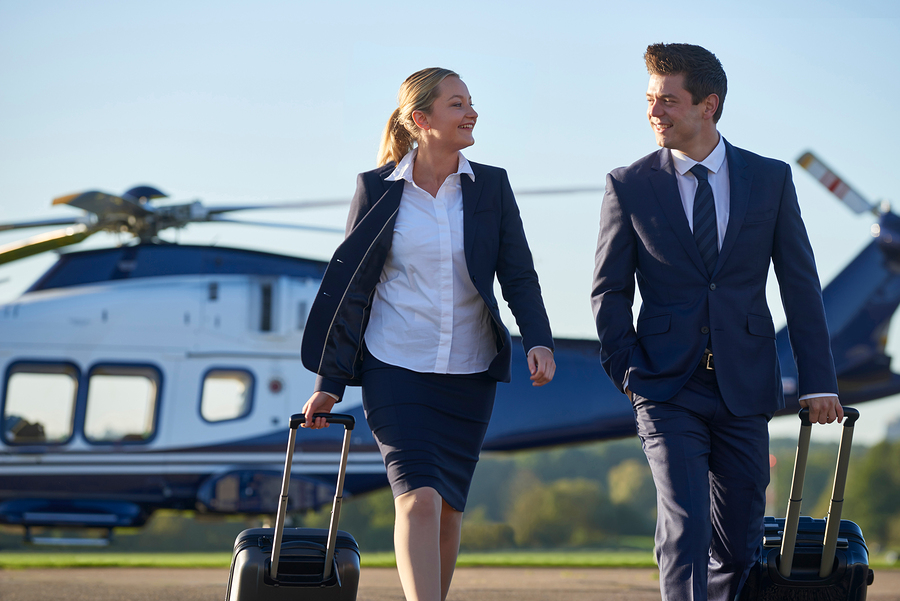

 Super Bowl 50 was held on Feb. 7, 2016, at Levi’s Stadium in Santa Clara, California, located between San Jose and San Francisco. As the largest American sports attraction of the year, experts estimated up to 1,200 private jets descended on the area as fans lined up for the annual showdown. With wine country and top golf courses nearby, many people expected private jet travelers to extend their trips into Northern California.
Super Bowl 50 was held on Feb. 7, 2016, at Levi’s Stadium in Santa Clara, California, located between San Jose and San Francisco. As the largest American sports attraction of the year, experts estimated up to 1,200 private jets descended on the area as fans lined up for the annual showdown. With wine country and top golf courses nearby, many people expected private jet travelers to extend their trips into Northern California. Several high-end travel companies have recently come up with a novel journey idea: custom excursions that take travelers by private jet to some of the world’s most extraordinary destinations.
Several high-end travel companies have recently come up with a novel journey idea: custom excursions that take travelers by private jet to some of the world’s most extraordinary destinations. Many of us believe that our pets are part of the family, and so it is natural that we want to take them with us when we travel for business or on vacations. When your four-legged family member wants to tag along, it’s important to ensure that the trip is an enjoyable and safe experience for everyone. To that end, the following tips can help you travel comfortably with your furry friends:
Many of us believe that our pets are part of the family, and so it is natural that we want to take them with us when we travel for business or on vacations. When your four-legged family member wants to tag along, it’s important to ensure that the trip is an enjoyable and safe experience for everyone. To that end, the following tips can help you travel comfortably with your furry friends: Traveling commercial can be stressful enough — but add pregnancy and/or children into the mix and it can reach new levels of complication. Most scheduled flights won’t allow a pregnant woman to travel after 36 weeks and they can even require a ‘safe to travel’ medical waiver after 28 weeks. Who needs that level of attention?
Traveling commercial can be stressful enough — but add pregnancy and/or children into the mix and it can reach new levels of complication. Most scheduled flights won’t allow a pregnant woman to travel after 36 weeks and they can even require a ‘safe to travel’ medical waiver after 28 weeks. Who needs that level of attention? Traveling the world, visiting an exciting new location every day, seeing the world from 40,000 feet about the ground … sounds like a dream, right? But pilots and flight crews face risks that other occupations often do not.
Traveling the world, visiting an exciting new location every day, seeing the world from 40,000 feet about the ground … sounds like a dream, right? But pilots and flight crews face risks that other occupations often do not. Sending employees abroad for a quick trip or assignment is an essential part of doing everyday business for many organizations, so much so that frequent business travel has become essential to thriving in a global economy. If you, or your employees, travel a lot on behalf of your business — both in the U.S. and abroad — it’s your legal responsibility to ensure their health and safety.
Sending employees abroad for a quick trip or assignment is an essential part of doing everyday business for many organizations, so much so that frequent business travel has become essential to thriving in a global economy. If you, or your employees, travel a lot on behalf of your business — both in the U.S. and abroad — it’s your legal responsibility to ensure their health and safety. Another year, and another Valentine’s Day is almost here. As a jet owner, you have plenty of options for making the holiday memorable for you and your significant other. If you haven’t made plans yet, consider a spur-of-the-moment getaway to one of these three destinations — each perfect for a Valentine’s weekend retreat.
Another year, and another Valentine’s Day is almost here. As a jet owner, you have plenty of options for making the holiday memorable for you and your significant other. If you haven’t made plans yet, consider a spur-of-the-moment getaway to one of these three destinations — each perfect for a Valentine’s weekend retreat. Jet lag is an annoyance and even a health issue for anyone who flies across multiple time zones. For frequent flyers, such as on-the-go business executives, jet lag is more than a nuisance. It can have significant detrimental effects on well-being and productivity.
Jet lag is an annoyance and even a health issue for anyone who flies across multiple time zones. For frequent flyers, such as on-the-go business executives, jet lag is more than a nuisance. It can have significant detrimental effects on well-being and productivity.